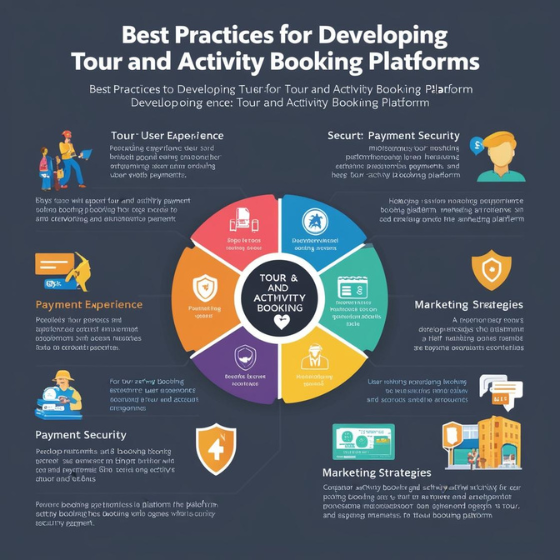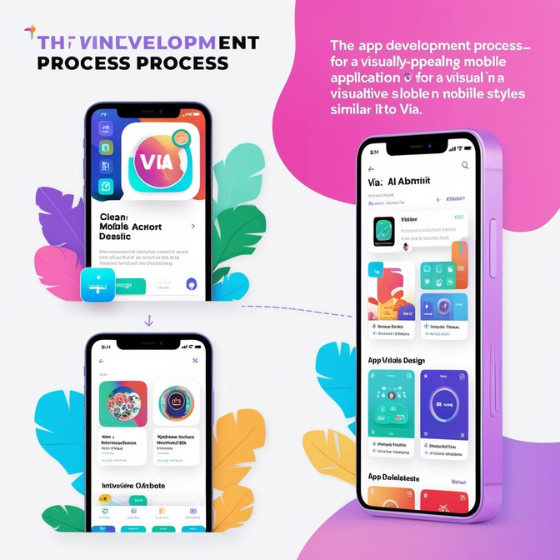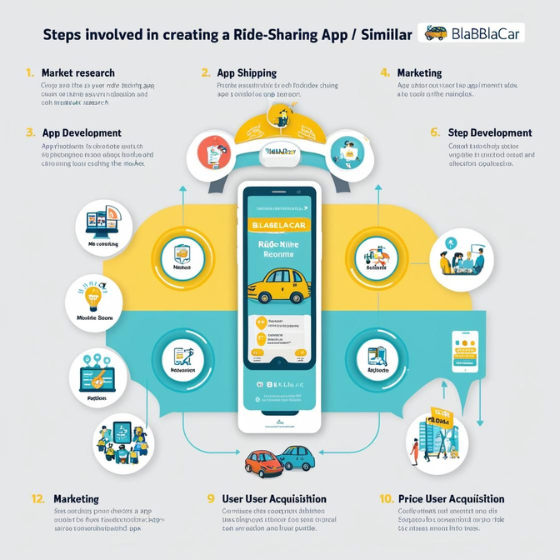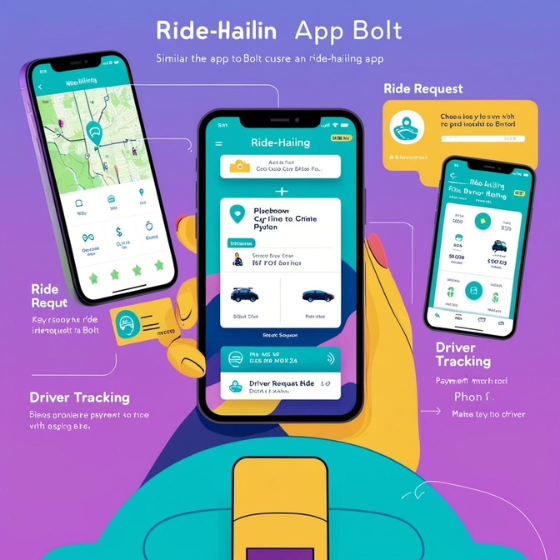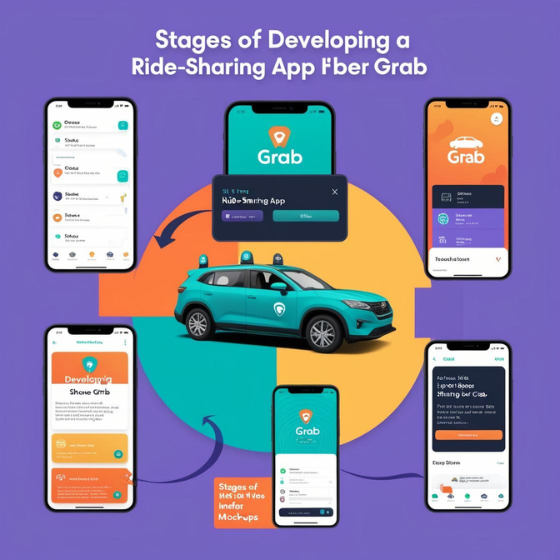Best Practices for Developing Tour and Activity Booking Platforms
The demand for online booking solutions in the travel industry is growing rapidly, with the global market for tour and activity booking platforms projected to surpass $300 billion by 2030. For businesses venturing into this domain, delivering a seamless user experience is crucial to stand out in the competitive landscape.
Developing a tour and activity booking platform requires a meticulous approach to ensure user satisfaction, operational efficiency, and business scalability. In this blog, we’ll explore best practices that guide successful development and help businesses thrive in the dynamic travel tech industry.
Why Best Practices Matter in Developing Booking Platforms
Building a booking platform isn’t just about creating a website or app—it’s about crafting an experience that meets user expectations and drives conversions. Here’s why best practices matter:
- Enhanced User Experience: An intuitive design and efficient performance keep users engaged and encourage repeat usage.
- Operational Efficiency: Streamlined processes save time and reduce errors for both users and service providers.
- Scalability: Best practices ensure the platform can handle growing traffic and feature demands.
- Competitive Edge: By integrating advanced features and technology, you stay ahead of competitors.
Adopting these practices ensures your platform is not just functional but a market leader.
Best Practices for Developing Tour and Activity Booking Platforms
1. Prioritize User Experience (UX)
The success of a booking platform hinges on its ability to provide a seamless experience for users.
- Clean Design: Use a clutter-free interface with intuitive navigation.
- Mobile-First Approach: Ensure the platform is responsive and optimized for smartphones and tablets.
- Streamlined Booking Process: Minimize the number of steps required to complete a booking.
Pro Tip: Use A/B testing to refine the UX and identify designs that drive maximum conversions.
2. Leverage APIs for Real-Time Data
APIs are essential for accessing real-time information, ensuring accuracy and reliability.
- GDS Integration: Connect with Global Distribution Systems like Amadeus or Sabre for real-time availability of activities.
- Payment Gateways: Secure and flexible options like Stripe or PayPal for seamless transactions.
- Geolocation Services: Incorporate maps and location-based recommendations using Google Maps API.
These integrations elevate the platform’s functionality and user experience.
3. Offer Personalization
Modern travelers expect platforms to understand their preferences and provide tailored recommendations.
- Use AI and Machine Learning to analyze user behavior and suggest relevant tours or activities.
- Allow users to create wishlists, save preferences, and receive alerts about deals or new offerings.
Personalization enhances customer satisfaction and loyalty.
4. Focus on Security and Compliance
With increasing cyber threats, security should be a top priority.
- Implement SSL encryption to protect user data.
- Comply with data privacy regulations like GDPR for European users or CCPA for Californians.
- Use tokenization and two-factor authentication (2FA) to secure payment processes.
Ensuring trust through robust security measures builds credibility.
5. Optimize for SEO and Discoverability
Search Engine Optimization (SEO) helps your platform rank higher on search engines, attracting organic traffic.
- Conduct keyword research to target phrases like “adventure activities in [location].”
- Use descriptive meta tags, alt texts for images, and schema markup to improve visibility.
- Optimize loading speed, as slow platforms can deter users and hurt search rankings.
6. Incorporate Reviews and Ratings
Social proof plays a significant role in influencing booking decisions.
- Enable verified customers to leave reviews and ratings.
- Highlight top-rated activities on the homepage or search results.
- Monitor feedback to address issues and improve services.
7. Plan for Scalability and Performance
Your platform should be equipped to handle increased traffic during peak seasons or promotional events.
- Use cloud-based infrastructure like AWS or Microsoft Azure for scalability.
- Conduct stress testing to identify performance bottlenecks.
- Employ Content Delivery Networks (CDNs) to ensure faster load times globally.
Challenges and Solutions in Building Booking Platforms
Building a tour and activity booking platform is not without its challenges. Here are some common hurdles and how to overcome them:
| Challenge | Solution |
|---|---|
| Integrating multiple APIs | Use middleware for seamless API integration. |
| Managing global audience needs | Incorporate multi-language and currency support. |
| Handling last-minute cancellations | Automate refund processes and offer flexible policies. |
Examples of Best-in-Class Booking Platforms
1. GetYourGuide
GetYourGuide excels with its AI-driven personalized recommendations, a simple user interface, and transparent pricing.
2. Klook
Klook stands out by integrating multimedia content, such as videos and 360-degree tours, to help users visualize experiences before booking.
3. Viator
Known for its extensive catalog and robust review system, Viator emphasizes trust and convenience.
These platforms demonstrate the importance of adhering to best practices to achieve long-term success.
How Sodio Can Help
At Sodio, we specialize in building scalable, user-friendly booking platforms that cater to the unique needs of businesses. Our services include:
- Custom Development: Tailored solutions to bring your vision to life.
- API Integration: Seamless connections for real-time booking and payment.
- UX/UI Design: Engaging designs that boost user satisfaction and conversions.
Check out our custom software development services to see how we can help you create a cutting-edge booking platform.
Conclusion
Developing a tour and activity booking platform is a complex but rewarding process. By following best practices—prioritizing UX, leveraging APIs, focusing on security, and planning for scalability—you can build a platform that not only meets user expectations but also drives business growth.
Whether you’re launching a new platform or upgrading an existing one, partnering with experts like Sodio ensures a smooth journey from concept to execution. Contact us today to get started on transforming the travel experience for your users.
